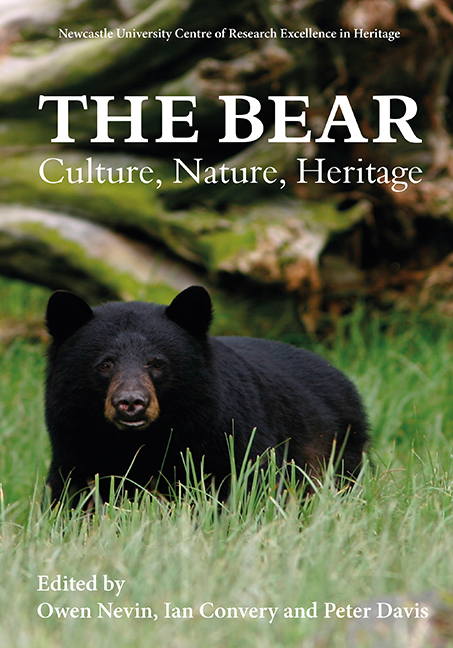Book contents
- Frontmatter
- Contents
- List of Illustrations
- Acknowledgments
- List of Abbreviations
- Foreword: The Bear: A Cultural and Natural Heritage
- Introduction: What is a Bear?
- Bear-People Interactions
- Bears in the Public Gaze
- Bear Biology, Management and Conservation
- Afterword: “It's Me Bear”: Reflections on a Unique Career Working with Bears
- List of Contributors
- Index
- Previous titles
5 - Bears, Wildmen, Yeti and Sasquatch
Published online by Cambridge University Press: 21 March 2020
- Frontmatter
- Contents
- List of Illustrations
- Acknowledgments
- List of Abbreviations
- Foreword: The Bear: A Cultural and Natural Heritage
- Introduction: What is a Bear?
- Bear-People Interactions
- Bears in the Public Gaze
- Bear Biology, Management and Conservation
- Afterword: “It's Me Bear”: Reflections on a Unique Career Working with Bears
- List of Contributors
- Index
- Previous titles
Summary
Humans have long held an affinity with bears, and a fascination for their superficial, but remarkable, similarity to people. This allure has even taken the form of worship, or arctolatry. Some have argued that the romantic notions of ancient bear cults and Paleolithic shrines are more the result of taphonomic processes and the imaginations of early discoverers (Wunn 2001). Wunn (2001, 457) concludes, ‘Conceptions of cave bear worship during the early and middle Paleolithic period belong to the realm of legend.’ Not all might agree, but in any case, in the more recent past, bear worship is manifest among ethnic groups across northern Eurasia, stretching from the Basques of the Pyrenees to the Ainu of Hokkaido. Intertwined with these practices is the frequent folk belief that humans descended from bears. For example, the ancient royal lines of Denmark and Sweden are declared to result from a cross between a woman and a bear (Magnus 1555). Indigenous peoples of North America also held the notion that bears and humans can interbreed. For example, the Haida of the Pacific coast of Alaska and Canada hold a tradition of a woman taken as a wife by a bear. The daughter of this pairing eventually returned to live with the Haida, and according to the legend, this primal bear-human goddess is the ancestor of all those entitled to wear the prestigious bear clan crest (Smith 1909).
Bears exhibit notable likenesses to humans in both anatomy and behaviour. Bears walk on plantigrade feet, they can stand upright, they nurse their young from paired pectoral mammae as do humans, they are omnivorous and intelligent, and they have colour vision. Medieval physicians recognized the similarity between bears and humans and, prior to knowledge of the great apes, considered the bear one of the animals most closely related to humans (Pastoureau 2011). Poet and environmental activist Gary Snyder (1990, 175) mused, ‘After you take a bear's coat off, it looks just like a human.’ In fact, as any hunter who has dressed a bear carcass can attest, the resemblance in musculoskeletal anatomy is so striking that some texts on forensic anthropology include specific references to bear skeletal anatomy in order to differentiate it from human remains.
- Type
- Chapter
- Information
- The Bear: Culture, Nature, Heritage , pp. 55 - 66Publisher: Boydell & BrewerPrint publication year: 2019



